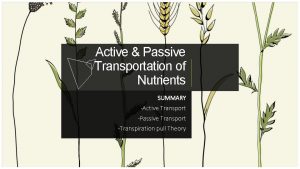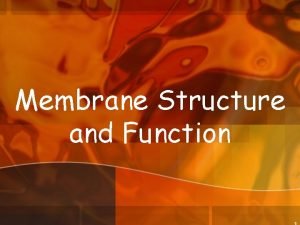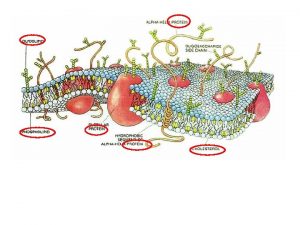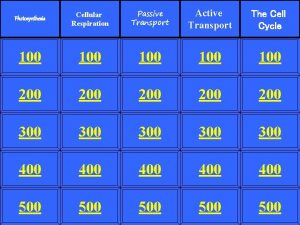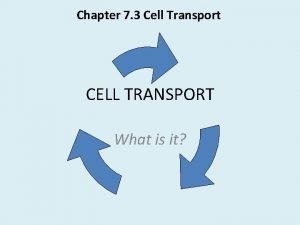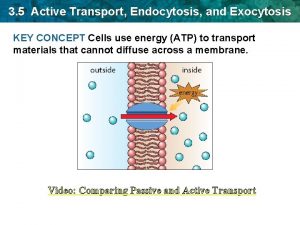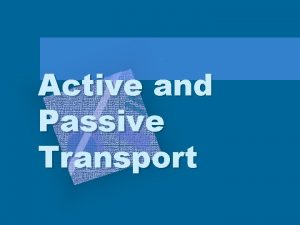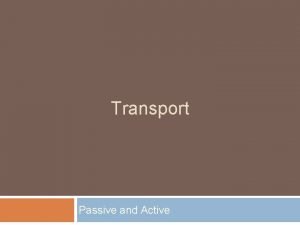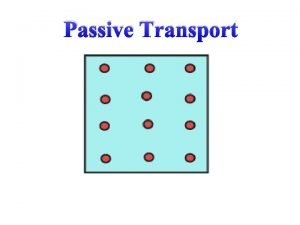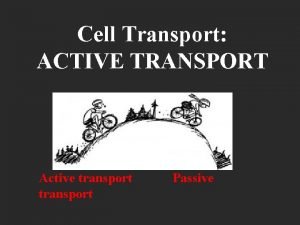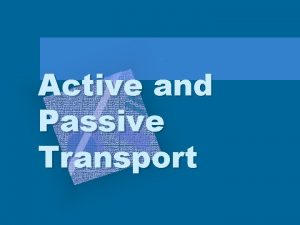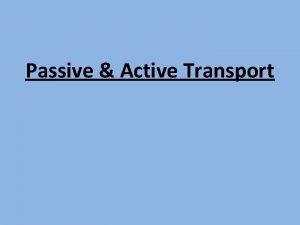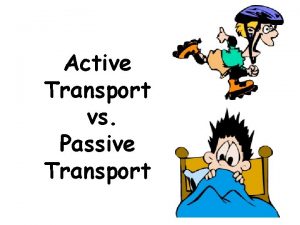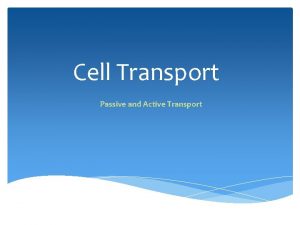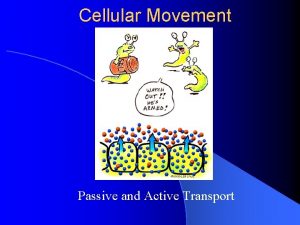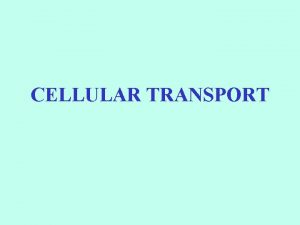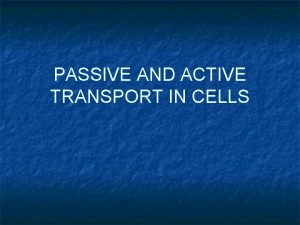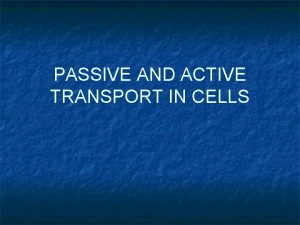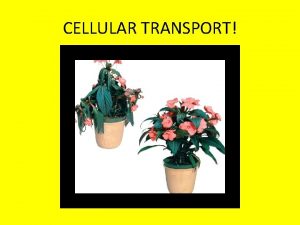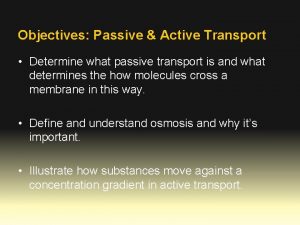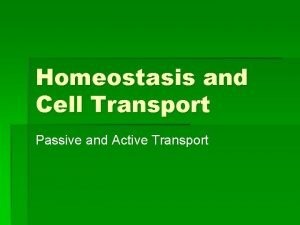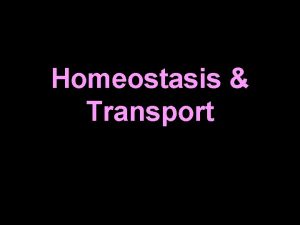Transport in the Cell Passive and Active Passive




















- Slides: 20

Transport in the Cell Passive and Active

Passive Transport There are three types of passive transport 1. Simple Diffusion 2. Facilitated Diffusion 3. Osmosis

Simple Diffusion Movement of particles from an area of high concentration to an area of low concentration

Simple Diffusion Concentration gradient – difference in concentration between two areas

Simple Diffusion Doesn’t require any energy When diffusion ends, it is called Dynamic Equilibrium

Simple Diffusion Cell membranes are selectively permeable – only certain substances can pass through by diffusion

Simple Diffusion Water, oxygen and carbon dioxide pass through the membrane freely Ions (charged molecules) and large molecules can’t get through

Facilitated Diffusion Cell membranes of carrier proteins that help large charged molecules get through

Osmosis Net movement of water across a selectively permeable membrane

Osmosis Isotonic Solution – equal solute concentration No osmosis

Osmosis Hypertonic Solution – high concentration of solute Water moves out

Osmosis Hypotonic Solution – lower concentration of solute Water moves in

Who Cares? Hemolysis – bursting of the red blood cells Too much water in the cells can be fatal Crenation – shrinking of blood cells Too little water in the cells can also be fatal

Active Transport Movement of substances through a membrane against a concentration gradient

Sodium Potassium Pump Allows nerve and muscle cells to function. Requires energy to move sodium out and potassium in.

Bulk Transport Moves large quantities of materials across membrane Two types: Endocystosis Exocystosis

Endocystosis Bring materials IN A) phagocystosis – cell eating B) pinocytosis – cell drinking

Phagocytosis Pseudopods – fingerlike projections sent out by cell membrane that enclose particle

Phagocytosis Cell’s plasma membrane engulfs a drop of extracellular fluid

Exocytosis Take materials OUT (Exo = exit) Material is enclosed in a secretory vesicle, fuses with the membrane, and spills out
 Primary active transport and secondary active transport
Primary active transport and secondary active transport Primary active transport vs secondary active transport
Primary active transport vs secondary active transport Active transport diagram
Active transport diagram Now answer the questions
Now answer the questions Active transport vs passive transport venn diagram
Active transport vs passive transport venn diagram Unlike passive transport active transport requires
Unlike passive transport active transport requires Bioflix activity membrane transport active transport
Bioflix activity membrane transport active transport Bioflix activity membrane transport diffusion
Bioflix activity membrane transport diffusion Active and passive transport
Active and passive transport Difference of active and passive transport
Difference of active and passive transport Example of active transport in a cell
Example of active transport in a cell Types of passive transport
Types of passive transport Is photosynthesis active or passive transport
Is photosynthesis active or passive transport Active or passive transport
Active or passive transport Exocytosis active or passive transport
Exocytosis active or passive transport Exocytosis
Exocytosis Active vs passive transport
Active vs passive transport Symport
Symport Transport protein
Transport protein Facilitated diffusion and active transport
Facilitated diffusion and active transport Indirect active transport
Indirect active transport








